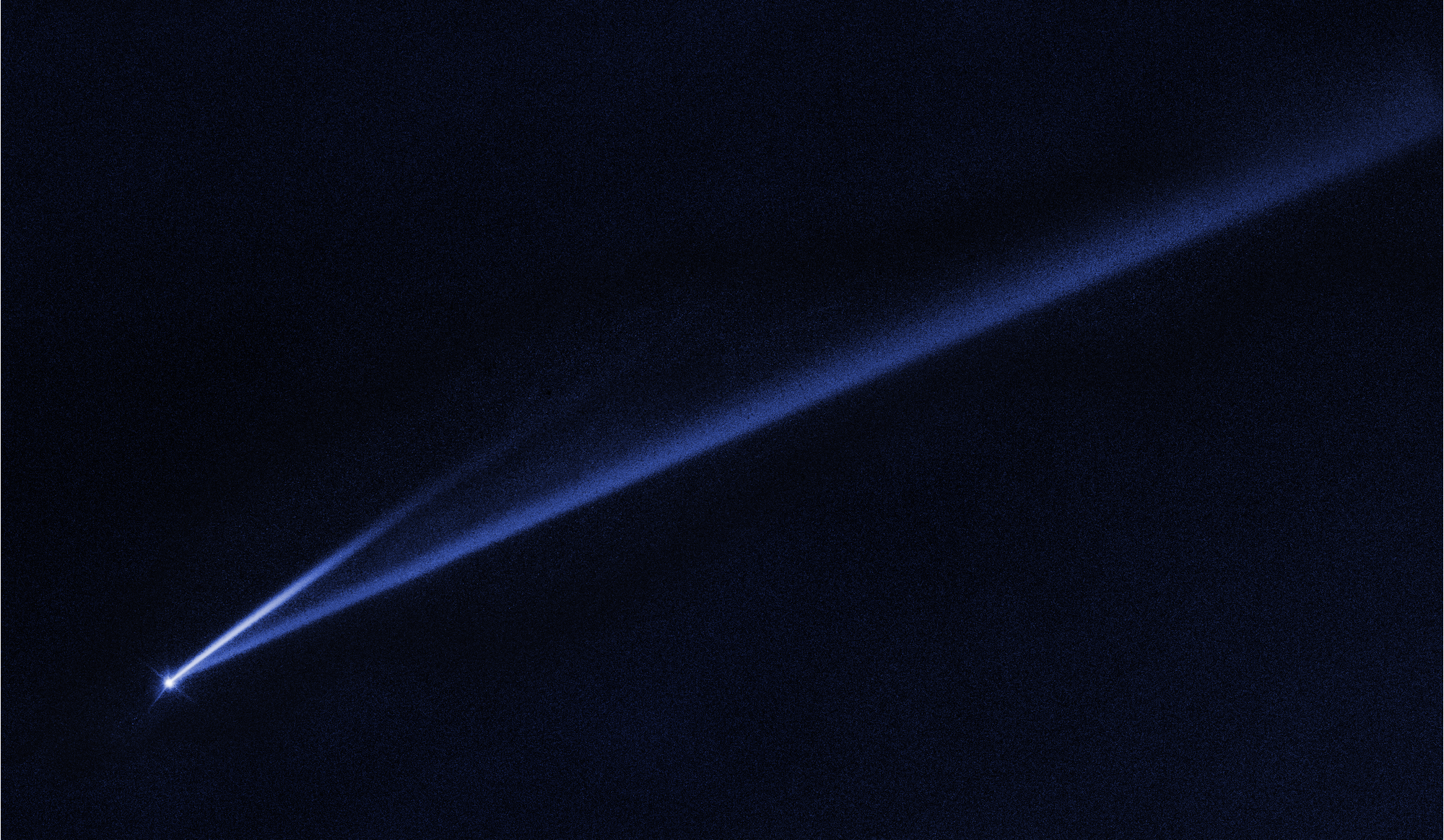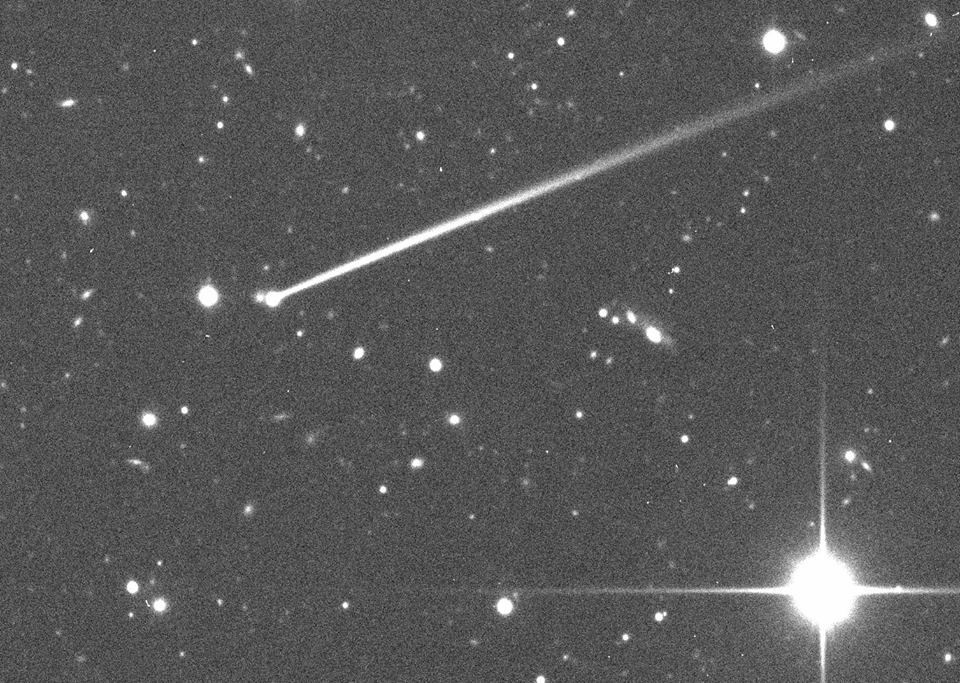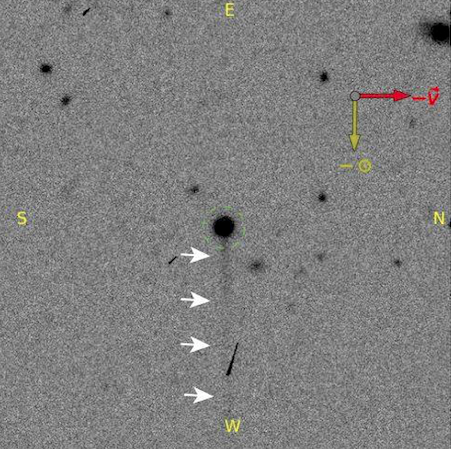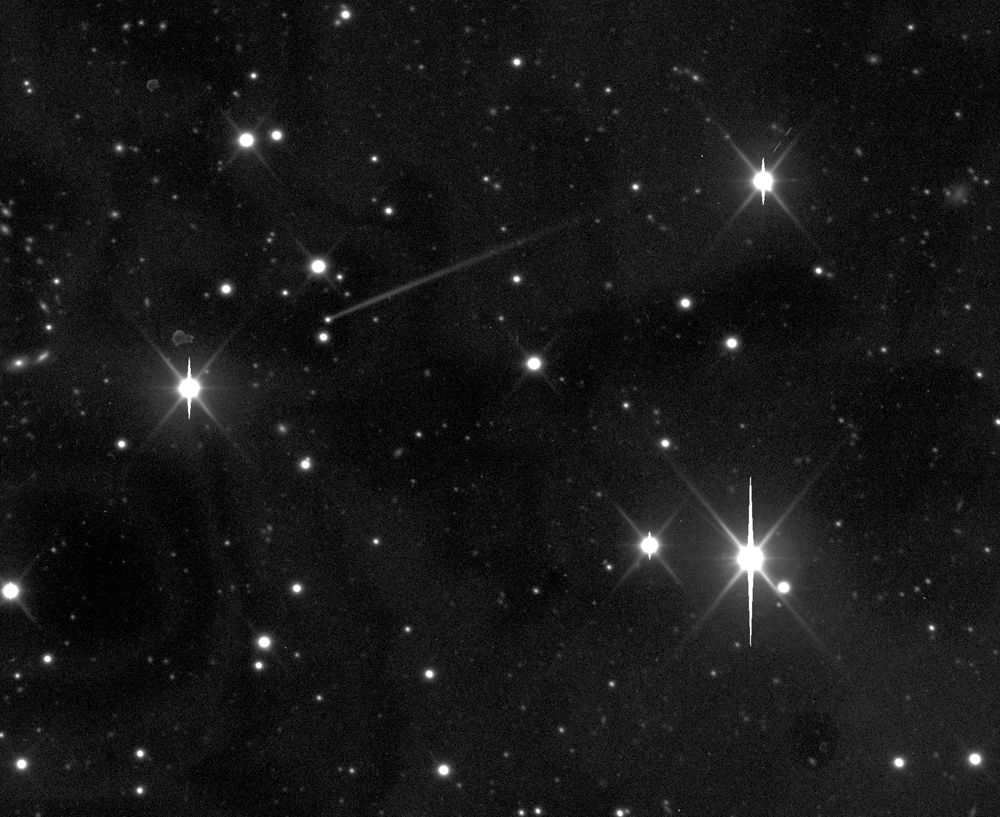
Perihelion: 2020 January 2.79, q = 1.859 AU
It has been obvious for several decades that the dividing line between “comets” and “asteroids” is, in a word, nebulous, and some facets of this will be explored in future “Special Topics” presentations. One group of objects that are included within this discussion were initially referred to as “main belt comets,” so called because they are objects traveling in near-circular orbits within the main asteroid belt that nevertheless have exhibited behavior typical of active comets. That term has now been largely supplanted by the term “active asteroids,” which among other things recognizes that there are objects under this umbrella that orbit outside the main asteroid belt. The activity exhibited by some of these objects does genuinely seem to be due to the sublimation of volatiles that is typical of comets, but the activity exhibited by other such objects appears to be due to various other mechanisms. The entire subject of “active asteroids” is the topic of a future “Special Topics” presentation.
One of the most dramatic examples of an “active asteroid” is an object discovered on May 12, 1988 – and provisionally designated as 1988 JC1 – by Carolyn and Eugene Shoemaker during the course of their photographic survey for near-Earth asteroids conducted from Palomar Observatory in California. After several observations over the next few years – including an accidental “re-discovery” from Catalina Observatory in Arizona in May 1995 – it received the permanent number (6478) in July 1995, and in July 1999 it was officially named “Gault” in honor of planetary geologist Donald Gault who was an expert in impact and cratering processes on planetary bodies. Gault is apparently a stony-type asteroid approximately 4 km in diameter; it orbits within the inner regions of the main asteroid belt in a low-eccentricity orbit (0.19) with an orbital period of 3.50 years.

For the first two decades following its discovery Gault apparently behaved as a seemingly “ordinary” asteroid. However, on January 5, 2019, an image taken during the course of the ATLAS survey in Hawaii showed that Gault was accompanied by a bright, straight tail-like structure over two arcminutes long. Several images taken elsewhere, including a Las Cumbres Observatory image that I took on January 8, confirmed this feature, and in fact I measured it as being slightly over four arcminutes in length.
This “tail” remained relatively constant in appearance and brightness for the next few weeks, however in late January another tail, brighter than the first one, appeared to the north of the original tail and oriented about ten degrees in position angle relative to it. Numerous observatories around the world followed the development of this second tail, and in early February Gault was imaged with the Hubble Space Telescope.

Analysis of all the data about Gault does not indicate the presence of any gaseous emissions but instead indicates that the tails are composed entirely of dust. The Hubble data in particular suggests that the dust was ejected in October 2018 as a result of a rapid rotation, with this rapid rotation being due in turn to a phenomenon known as the Yarkovsky-O’Keefe-Radzievskii–Paddack (YORP) effect, which is caused by scattering of sunlight impinging on planetary surfaces and by emission of thermal radiation. Ground-based infrared observations obtained in March 2019 indicate that Gault was changing color – from reddish to bluish – apparently due to sun-exposed red dust being spewed off by the rapid rotation and in turn exposing the bluer surface underneath.
On the other hand, a recent study conducted by a team led by Colin Chandler of Northern Arizona University of archived images taken by the Dark Energy Camera (DECam) at Cerro Tololo Inter-American Observatory in Chile has revealed that Gault has been more-or-less undergoing sustained activity since September 2013 – the activity shown in the images not being noticed at the times they were taken. This long period of sustained activity suggests at the very least that the mechanism driving the activity is complex, and may mean, in the words of Chandler and his colleagues, that “Gault represents a new class of object, perpetually active due to rotational spin-up.”
Gault was near opposition, and about 18th magnitude, around the time its activity was observed in early 2019. It has recently passed through perihelion but, having been in conjunction with the sun last November, is still low in the dawn sky for observations but should be accessible within another couple of months. When at opposition in late September it should be close to 17th magnitude. For what it’s worth, at the time of its next perihelion passage in early July 2023 Gault will be only one month past opposition and will be well placed for observation.

More from Week 4:
This Week in History Special Topic Free PDF Download Glossary
Ice and Stone 2020 Home Page


